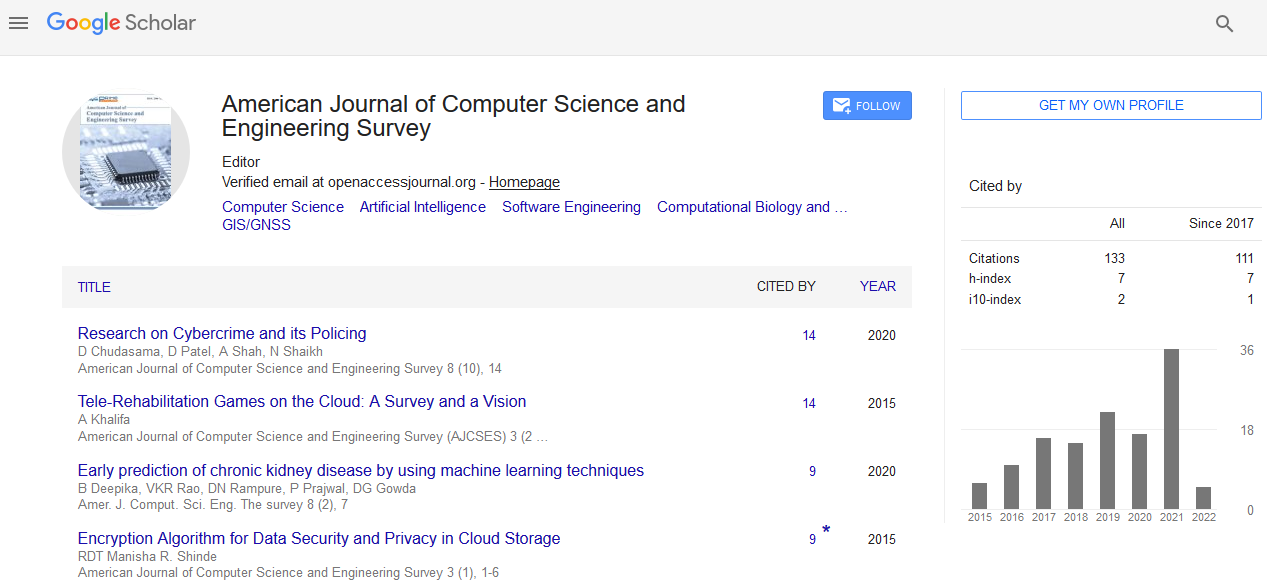Keywords
Barriers to cessation; Reasons for quitting; Cigarette; Drinking; Concurrent
Description
Computer security, cybersecurity or information technology
security (IT security) is the protection of computer systems and
networks from the theft of or damage to their hardware, software,
or electronic data and also from the disruption or misdirection of
the services they supply.
Due to increased reliance on computer systems, Internet and
wireless network standards such as Bluetooth and Wi-Fi, and
due to the growth of "smart" devices, including smartphones,
televisions, and therefore the various devices that constitute
the "Internet of things" this field is becoming more important.
Cybersecurity is additionally one of the main challenges in the
contemporary world owing to its complexity, both in terms of
politics and technology..
Vulnerabilities and attacks
• Backdoor
• Denial-of-service attack
• Direct-access attacks
• Eavesdropping
• Multi-vector
• polymorphic attacks
• Phishing
• Privilege escalation
• Social engineering
• Spoofing
• Tampering
Information security culture
Employee behavior can have an enormous impact on information
security in organizations. Cultural concepts can help different
segments of the organization work effectively or work against
effectiveness towards information security within a corporation.
Information security culture is that the "totality of patterns of
behavior in a corporation that contributes to the protection of
data of all types”.
Andersson and Reimers (2014) found that employees often don’t
see themselves as part of their organization's information security
effort and sometimes take actions that impede organizational
changes. Research shows information security culture must be
improved continuously. In ″Information Security Culture from
Analysis to Change″, authors commented, ″It's a never-ending
process, a cycle of evaluation and alter or maintenance.″
Five steps should be taken to manage the information security
culture: pre-evaluation, strategic planning, operative planning,
implementation, and post-evaluation.
• Pre-Evaluation: To analyse the current security policy and
to identify the awareness of information security within
employees.
• Strategic Planning: Clustering people is helpful to achieve
it and to come up with a better awareness program, clear
targets need to be set.
• Operative Planning: Based on internal communication,
management-buy-in, and security awareness and a training
program a good security culture can be established.
• Implementation: To implement the information security
culture, four stages should be used. They are:
Commitment of the management
• Post-Evaluation: to assess the success of the planning and
implementation, and to identify unresolved areas of concern.
Systems at risk
• Financial systems
• Utilities and industrial equipment
• Aviation
• Consumer devices
• Large corporations
• Automobiles
• Government
• Internet of things and physical vulnerabilities
• Medical systems
• Energy sector
Computer protection (countermeasures)
In computer security a countermeasure is an action, device,
procedure or technique that reduces a threat, vulnerability, or an
attack by eliminating or preventing it, by minimizing the harm it
can cause, or by discovering and reporting it so that corrective
action can be taken.
Some common countermeasures are listed in the following
sections:
• Security by design
• Security architecture
• Security measures
• Vulnerability management
• Reducing vulnerabilities
• Hardware protection mechanisms
• Secure operating systems
• Secure coding
• Capabilities and access control lists
• End user security training
• Digital hygiene
• Response to breaches
Types of security and privacy
• Access control
• Anti-key loggers
• Anti-malware
• Anti-spyware
• Anti-subversion software
• Anti-tamper software
• Anti-theft
• Antivirus software
• Cryptographic software
• Computer-aided dispatch (CAD)
• Firewall
• Intrusion detection system (IDS)
• Intrusion prevention system (IPS)
• Log management software
• Parental control
• Records management
• Sandbox
• Security information management
• SIEM
• Software and operating system updating

